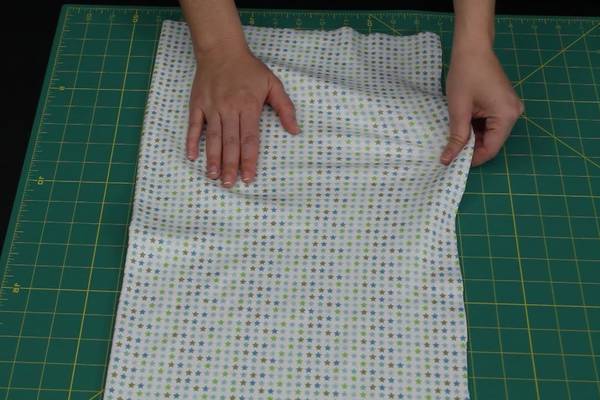
How to Cut Stretchy Fabric Straight (Helpful Tips and Guide)
Driven to the point of no return. That seems to be the stretch fabrics mission in life. They are hard to work with when you want to make an outfit that has the right stretch for you or your loved one. Take precautions to protect your sanity when sewing or cutting stretchy fabrics.
One good tip to cut stretchy fabrics in a straight line is to use a perspex ruler and a rotary cutter with a lot of patience. That is what it will take when working with stretchy fabrics of any sort. You need the patience of a Job to get the job done.
To learn more tips on how to cut stretchy fabrics in a straight line, just continue to read our article. It has those tips you have been looking for to make your sewing project look like a pro did the job.
How To Cut Stretchy Fabric

As you already know working with stretchy fabric is no walk in the park. How you cut this material may be the reason why you are having so much trouble. Here are some tips to try in order to make cutting your stretchy material easier:
- Use soap slivers to make your marks- this does not bunch up the fabric when you draw long lines.
- Try a rotary cutter- scissors often contribute to bunching of the material and can create jagged edges. This gives you a smoother, cleaner cut.
- Add stabilizes- this will help stiffen the stretchy material and keep the fabric in place while you cut it.
There is one key to cutting stretchy, knit, or jersey fabrics. What is very obvious to you, a mistake or glitch, may not be seen by anyone else.
Do You Cut Stretch Fabric on The Bias?

No, you should not cut stretch fabric on the bias if you are trying to sew with a non woven fabric. It seems that knits and other stretchy fabrics do not have a bias and you can ruin the project if you attempt this cut.
The bias is the 45-degree angle cut that goes through the weft and warp junction. Be careful when making this cut on any other material, if done wrong, you will see some unattractive pulling by the fabric when worn.
When your pattern calls for a bias cut, avoid heavyweight canvas, twills, and stretchy fabrics. You are asking for trouble if you ignore this piece of advice.
Which Direction To Cut Stretch Fabric

The ideal way to cut the stretchy fabrics you want to work with requires you to have a good cutting mat with a grid pattern on it or use the edge of a square table. Line up the selvage edge of the fabric with the edge of the table or grid line on the cutting mat.
Place weights in position to hold the fabric in place. Next, look at the cut end of the material and see if it is moving inward or outward. If it is moving inward, then adjust it so that it is looking outward. Nothing should be moving inward when trying to cut this fabric.
Once you have everything aligned just right, cut away. That is after you make your cut marks and draw your line.
How To Cut 4-Way Stretch Fabric vs One Way

One way stretch is actually 2-way stretch as if the material stretches in one direction, it will stretch in the opposite direction as well. The main issue with knit materials is that they do not have a grainline to follow.
If the knit has a grainline, it will be very different from the woven material you are used to sewing with. To cut knits and other stretchy materials make sure to cut along the grain. If you don’t you should end up with twisted seams that do not make their appearance until after you have washed the completed outfit.
Then flatten your knit material by putting a light coating of spray starch on it.
Best Way To Cut Stretch Fabric

The best way to cut stretch fabric is very carefully. The reason for saying that is because the material is very finicky to work with and one small error, can make the material pucker or distort in the wrong place.
Knit fabrics are very delicate to work with when trying to cut them. That is why you should use a cutting mat with a grid pattern on it to help you get a straight line. Then use a rotary cutter to make your cut after you have marked the edge.
Don’t forget to put weights on the material after you have lined the first edge. You want the material to stay where you put it. Weights or painter’s tape will do that for you.
Cutting Stretch Fabric Tips

The first tip is to not panic when you see a mistake. You will see the errors because you made the outfit but just because you see them does not necessarily mean other people will see those mistakes.
Next, use a rotary cutter instead of scissors to cut the material. The rotary cutter removes those ragged edges you do not like to see when you are cutting this material. Third, try using a double-needle when sewing with stretchy fabric.
Do not pull a thread on stretchy material. That works for woven fabrics not knit or stretchy materials. Finally, even if you have a little ragged edging on the material, you still can sew a straight line and hide that edge.
Some Final Words
Cutting straight lines take a little confidence, the right applications, and a lot of patience. Knit and stretchy fabrics will test that patience time and again. Use the right tools and add a little weight when making a straight cut on stretchy materials.
That way you may preserve your sanity a little bit longer.

